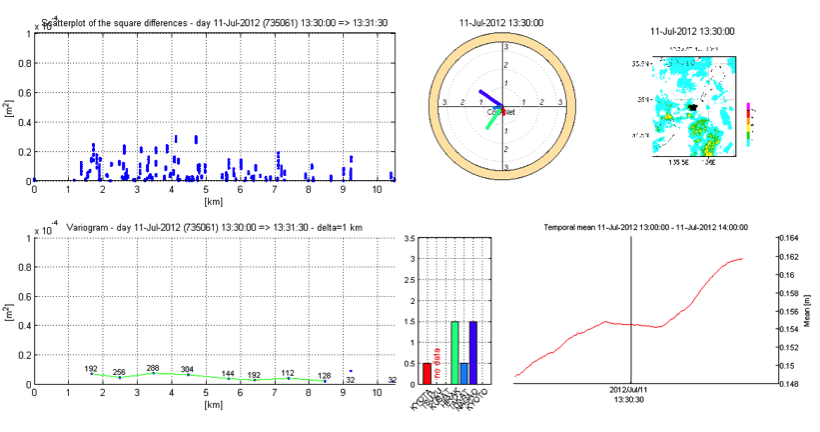Although developed for positioning, Global Navigation Satellites Systems (GNSS) can be also exploited for troposphere sounding.
When a positioning accuracy below a centimeter level is requested, delays affecting GNSS signals in the tropospheric layer have to be properly accounted for. More specifically, the component of such delays due to the troposphere water vapor content, hardly to be modeled for the high temporal and spatial variability, have to be estimated in the adjustment of GNSS observations.
This is done in terms of time and station dependent ‘ancillary parameters’ called Zenith Wet Delays (ZWDs).
Since many years, the meteorological community has started to consider these by-product of high accuracy positioning as ‘observations’ of water vapor and to assimilate them in Numerical Weather Prediction models in some cases in a routinely way.
Moreover, a mixed community of meteorologist and GNSS experts has been exploring a dedicated use of GNSS for meteorological purposes, by designing and implementing ad hoc experimental networks .
Reaserches on this topic have been conducted within the geodesy and geomatic group since almost a decade, starting within an ESA funded project called METAWAVE.
Up to now this topic has been and currently is treated within different funded project : ASI-SINERGY, ESA-STEAM, H2020- TWIGA and CARIPLO-LAMPO.
References:
Manzoni M, Monti Guarnieri A, Realini E, Venuti G (2020) Joint Exploitation of SAR and GNSS for Atmospheric Phase Screens Retrieval Aimed at Numerical Weather Prediction Model Ingestion, Remote Sens., 12, 654
Fermi A, Realini E, Venuti G (2018) The impact of relative and absolute GNSS positioning strategies on estimated coordinates and ZWD in the framework of meteorological applications, Appl Geomat, Springer Berlin Heidelberg.
Barindelli S, Realini E, Venuti G, Fermi A (2018)
Detection of water vapor time variations associated with heavy rain in northern Italy by geodetic and low-cost GNSS receivers, Earth Planets Space 70: 28.
